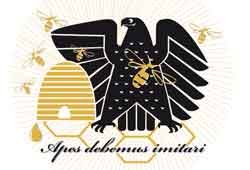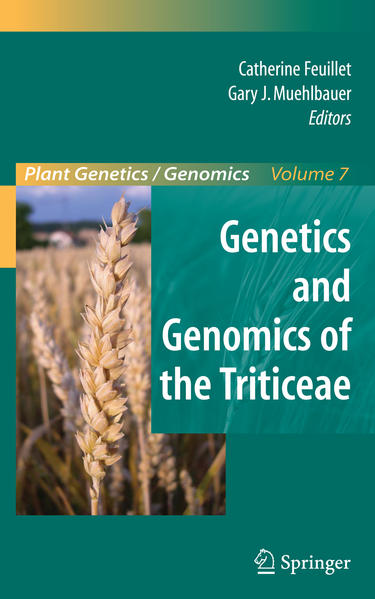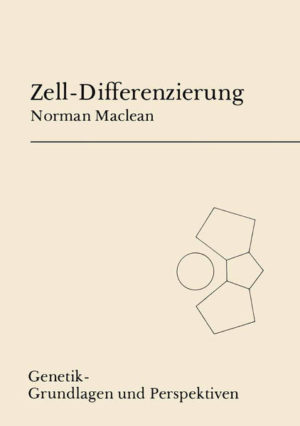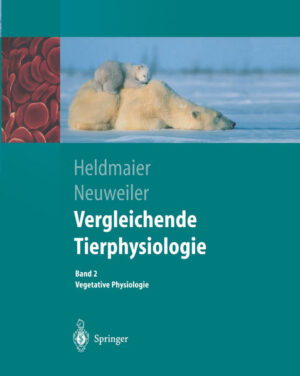- Softcover: 700 Seiten
- Verlag: Springer US
- Autor: Catherine Feuillet
- Auflage: 1. Aufl., erschienen am 02.12.2011
- ISBN-10: 1-4614-1706-6
- ISBN-13: 978-1-4614-1706-4
- Größe und/oder Gewicht: 23,5 x 15,5 cm
Genetics and Genomics of the Triticeae
Autoren: Catherine Feuillet279,99 €

HONIGHÄUSCHEN (BONN) – Sequencing of the model plant genomes such as those of A. thaliana and rice has revolutionized our understanding of plant biology but it has yet to translate into the improvement of major crop species such as maize, wheat, or barley. Moreover, the comparative genomic studies in cereals that have been performed in the past decade have revealed the limits of conservation between rice and the other cereal genomes. This has necessitated the development of genomic resources and programs for maize, sorghum, wheat, and barley to serve as the foundation for future genome sequencing and the acceleration of genomic based improvement of these critically important crops. Cereals constitute over 50% of total crop production worldwide (http://www.fao.org/) and cereal seeds are one of the most important renewable resources for food, feed, and industrial raw materials. Crop species of the Triticeae tribe that comprise wheat, barley, and rye are essential components of human and domestic animal nutrition. With 17% of all crop area, wheat is the staple food for 40% of the worlds population, while barley ranks fifth in the world production. Their domestication in the Fertile Crescent 10,000 years ago ushered in the beginning of agriculture and signified an important breakthrough in the advancement of civilization. Rye is second after wheat among grains most commonly used in the production of bread and is also very important for mixed animal feeds. It can be cultivated in poor soils and climates that are generally not suitable for other cereals. Extensive genetics and cytogenetics studies performed in the Triticeae species over the last 50 years have led to the characterization of their chromosomal composition and origins and have supported intensive work to create new genetic resources. Cytogenetic studies in wheat have allowed the identification and characterization of the different homoeologous genomes and have demonstrated the utility of studying wheat genome evolution as a model for the analysis of polyploidization, a major force in the evolution of the eukaryotic genomes. Barley with its diploid genome shows high collinearity with the other Triticeae genomes and therefore serves as a good template for supporting genomic analyses in the wheat and rye genomes. The knowledge gained from genetic studies in the Triticeae has also been used to produce Triticale, the first human made hybrid crop that results from a cross between wheat and rye and combines the nutrition quality and productivity of wheat with the ruggedness of rye. Despite the economic importance of the Triticeae species and the need for accelerated crop improvement based on genomics studies, the size (1.7 Gb for the bread wheat genome, i.e., 5x the human genome and 40 times the rice genome), high repeat content (>80%), and complexity (polyploidy in wheat) of their genomes often have been considered too challenging for efficient molecular analysis and genetic improvement in these species. Consequently, Triticeae genomics has lagged behind the genomic advances of other cereal crops for many years. Recently, however, the situation has changed dramatically and robust genomic programs can be established in the Triticeae as a result of the convergence of several technology developments that have led to new, more efficient scientific capabilities and resources such as whole-genome and chromosome-specific BAC libraries, extensive EST collections, transformation systems, wild germplasm and mutant collections, as well as DNA chips. Currently, the Triticeae genomics „toolbox“ is comprised of: – 9 publicly available BAC libraries from diploid (5), tetraploid (1) and hexaploid (3) wheat; 3 publicly available BAC libraries from barley and one BAC library from rye; – 3 wheat chromosome specific BAC libraries; – DNA chips including commercially available first generation chips from AFFYMETRIX containing 55000 wheat and 22,000 barley genes; – A large number of wheat and barley genetic maps that are saturated by a significant number of markers; – The largest plant EST collection with 870000 wheat ESTs, 440000 barley ESTs and about 10000 rye ESTs; – Established protocols for stable transformation by biolistic and agrobacterium as well as a transient expression system using VIGS in wheat and barley; and – Large collections of well characterized cultivated and wild genetic resources. International consortia, such as the International Triticeae Mapping Initiative (ITMI), have advanced synergies in the Triticeae genetics community in the development of additional mapping populations and markers that have led to a dramatic improvement in the resolution of the genetic maps and the amount of molecular markers in the three species resulting in the accelerated utilization of molecular markers in selection programs. Together, with the development of the genomic resources, the isolation of the first genes of agronomic interest by map-based cloning has been enabled and has proven the feasibility of forging the link between genotype and phenotype in the Triticeae species. Moreover, the first analyses of BAC sequences from wheat and barley have allowed preliminary characterizations of their genome organization and composition as well as the first inter- and intra-specific comparative genomic studies. These later have revealed important evolutionary mechanisms (e.g. unequal crossing over, illegitimate recombination) that have shaped the wheat and barley genomes during their evolution. These breakthroughs have demonstrated the feasibility of developing efficient genomic studies in the Triticeae and have led to the recent establishment of the International Wheat Genome Sequencing Consortium (IWGSC) (http//:www.wheatgenome.org) and the International Barley Sequencing Consortium (www.isbc.org) that aim to sequence, respectively, the hexaploid wheat and barley genomes to accelerate gene discovery and crop improvement in the next decade. Large projects aiming at the establishment of the physical maps as well as a better characterization of their composition and organization through large scale random sequencing projects have been initiated already. Concurrently, a number of projects have been launched to develop high throughput functional genomics in wheat and barley. Transcriptomics, proteomics, and metabolomics analyses of traits of agronomic importance, such as quality, disease resistance, drought, and salt tolerance, are underway in both species. Combined with the development of physical maps, efficient gene isolation will be enabled and improved sequencing technologies and reduced sequencing costs will permit ultimately genome sequencing and access to the entire wheat and barley gene regulatory elements repertoire. Because rye is closely related to wheat and barley in Triticeae evolution, the latest developments in wheat and barley genomics will be of great use for developing rye genomics and for providing tools for rye improvement. Finally, a new model for temperate grasses has emerged in the past year with the development of the genetics and genomics (including a 8x whole genome shotgun sequencing project) of Brachypodium, a member of the Poeae family that is more closely related to the Triticeae than rice and can provide valuable information for supporting Triticeae genomics in the near future. These recent breakthroughs have yet to be reviewed in a single source of literature and current handbooks on wheat, barley, or rye are dedicated mainly to progress in genetics. In „Genetics and Genomics of the Triticeae“, we will aim to comprehensively review the recent progress in the development of structural and functional genomics tools in the Triticeae species and review the understanding of wheat, barley, and rye biology that has resulted from these new resources as well as to illuminate how this new found knowledge can be applied for the improvement of these essential species. The book will be the seventh volume in the ambitious series of books, Plant Genetics and Genomics (Richard A. Jorgensen, series editor) that will attempt to bring the field up-to-date on the genetics and genomics of important crop plants and genetic models. It is our hope that the publication will be a useful and timely tool for researchers and students alike working with the Triticeae.
Über „Genetics and Genomics of the Triticeae“
Das vorliegende Sachbuch zu Themen aus Umwelt und Natur „Genetics and Genomics of the Triticeae“ wurde erarbeitet und verfasst von Catherine Feuillet. Dieses Sachbuch erschien am 02.12.2011 und wurde herausgegeben von Springer US.
Bücher wie „Genetics and Genomics of the Triticeae“ sind im Onlineshop des Honighäuschens bestellbar. Online bestellte Fachbücher zur Imkerei und zu anderen Themen der Umwelt und des Artenschutzes sind zu den üblichen Öffnungszeiten auch direkt im Buchladen Bundesamt für magische Wesen in Bonn, der Stauhauptstadt von Nordrhein-Westfalen abholbar und werden auf Wunsch verschickt.
Das Thema Bienensterben, Rückgang von Insekten und allgemeines Artensterben ist in aller Munde und das Honighäuschen als frühere Bioland Imkerei hat sich von Anfang an daran beteiligt. Mehr als 35 Jahre Imkereierfahrung nahmen ihren Anfang 1982 mit den ersten eigenen Bienen.

Der zehnjährige Junge, der 1977 einem Hamburger Imker über die Schulter schaute; der Fünfzehnjährige, der mit der Imkerei in Zeiten begann, in denen es noch keine Varroamilbe gab; der achtzehnjährige Fahrschüler, der lernte, dass man die Windschutzsscheibe seines Autos nach einer längeren Fahrt von Insekten säubern muß; der zwanzigjährige Student, der für seine Bienen einen Platz in Bonn suchte; der dreißigjährige Berufsimker, der seinen Bienen quasi eine Gutenachtgeschichte erzählte und sich den Kopf zerbrach, wie man die Umwelt mit ihren Bienen, Wespen, Schmetterlingen und andere blütenbesuchenden Insekten vor den Machenschaften der Agrargiftindustrie und der Gleichgültigkeit agrarindustriehöriger Politiker schützt; der Imker, der nicht nur auf dem Weihnachtsmarkt Bonn die Öffentlichkeit suchte, um bei Führungen an den Bienen auf dem Dach der Bundeskunsthalle zu erleben, dass Kinder (und deren Helikoptermuttis!) Angst vor Schmetterlingen hatten, bis hin zum Begleiter von Forschungsprojekten zu den Riesenhonigbienen Nepals oder den Killerbienen Afrikas, stellt fest, dass etwas sehr im Argen liegt in unserem Umgang mit der Umwelt.
Es sollte jedem bewußt sein, dass die Haltung „Natur ja, aber bitte woanders!“ nicht in Ordnung ist.
Die wunderschöne Welt der Natur

In unserem Online-Buchshop finden Sie viele Bücher wie „Genetics and Genomics of the Triticeae“, die Ihnen die fantastische Welt der Bienen, Wespen, Ameisen, Hornissen und Schmetterlinge sowie anderer Insekten näherbringen.
Aber nach wie vor stehe ich Ihnen auch gern zu einem Gespräch oder zu einer Beratung im Umgang mit Bienen, Wespen, Hornisse, Wildbienen und Hummeln zur Verfügung, wenn Sie Fragen haben. Besuchen Sie uns in Bonn im Bundesamt für magische Wesen.
Und natürlich gibt es auch weiterhin Honig, Bienenwachskerzen und Met bei uns und zwar das ganze Jahr – nicht nur zu Weihnachten.
| Gewicht | 1205 g |
|---|---|
| Größe | 23,5 × 15,5 cm |
Marke
Springer US
Nur angemeldete Kunden, die dieses Produkt gekauft haben, dürfen eine Bewertung abgeben.





Bewertungen
There are no reviews yet